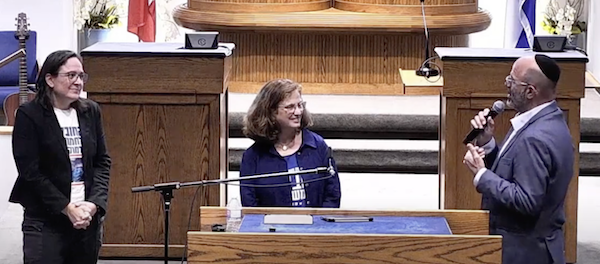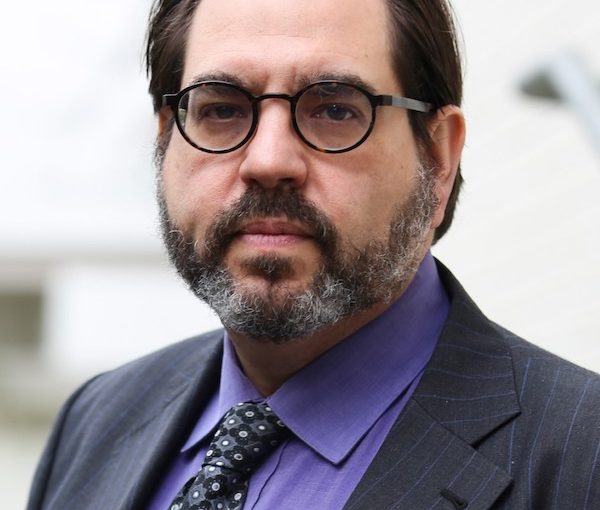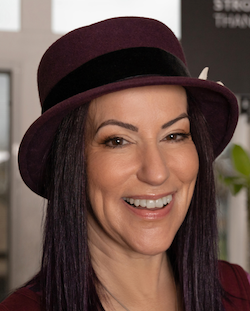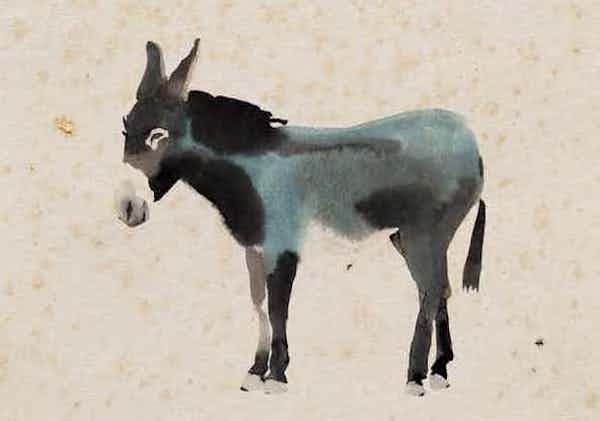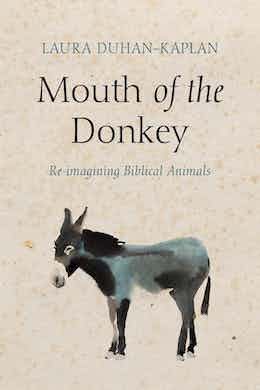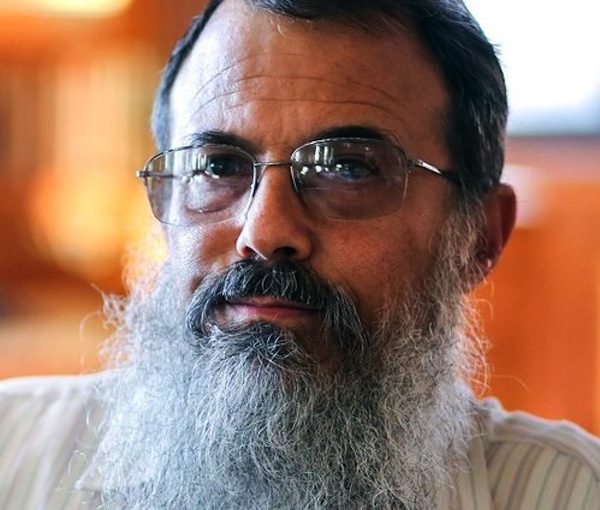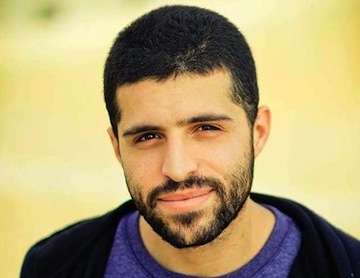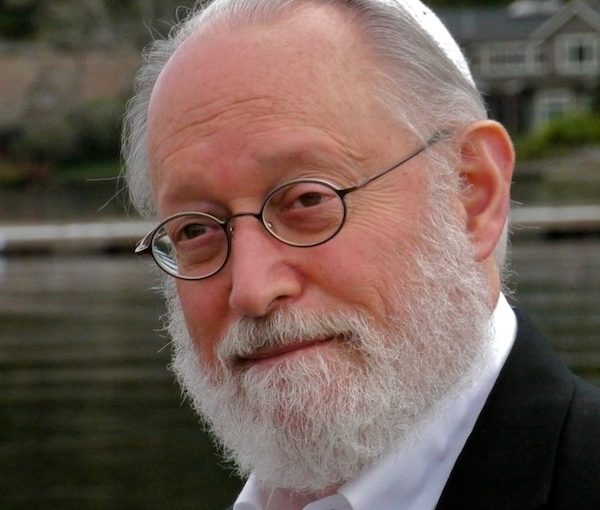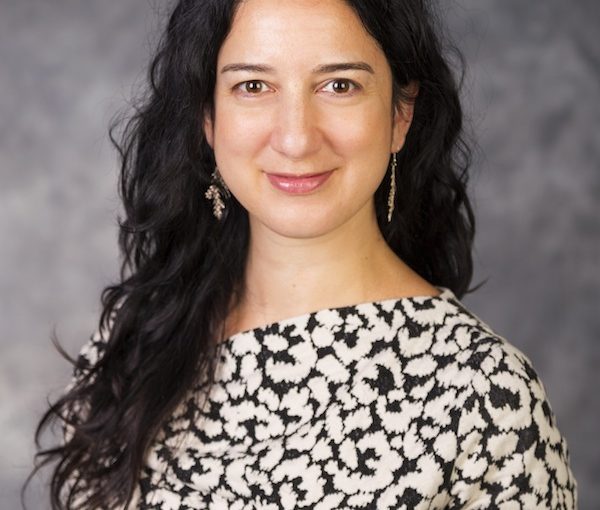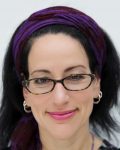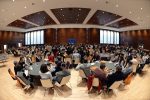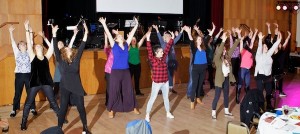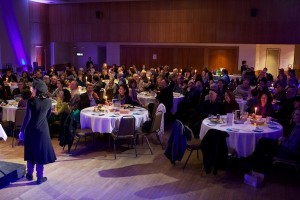Left to right: Ora Peled Nakash of the America-Israel Democracy Coalition and Michal Muszkat-Barkan of Safeguarding Our Shared Home listen to a question posed by Temple Sholom Rabbi Dan Moskovitz at an event Sept. 26. (screenshot)
More than 300 people pre-registered to attend Hear From Leaders in the Israeli Protest Movement at Temple Sholom on Sept. 26 and the sanctuary was full. Presented by the synagogue, UnXeptable Vancouver, the America-Israel Democracy Coalition, and Safeguarding our Shared Home, in partnership with JSpaceCanada, New Israel Fund of Canada, Ameinu Canada and Arza Canada, this was the first time that a Canadian Jewish establishment hosted protesters from Israel’s pro-democracy movement on Canadian soil.
Speaking before the Hamas terror attacks on Oct. 6, Michal Muszkat-Barkan of Safeguarding Our Shared Home, and Ora Peled Nakash of the America-Israel Democracy Coalition were touring as part of an effort to educate North American diaspora Jewry on the judicial coup attempt and other fundamental issues with which Israel’s society has been grappling this past year. The unprecedented protest movement was, at 39 weeks, the longest sustained protest movement in modern Israeli history. In response to the war, however, the movement suspended protests in Israel and around the world, including Vancouver, standing in solidarity with their fellow Israelis.
The Sept. 26 evening began with Rabbi Laura and Charles Kaplan singing Oseh Shalom, Salaam (Od Yavo) and Lu Yehi followed by Temple Sholom Rabbi Dan Moskovitz’s introduction of the partner organizations. He said, “We have tried to partner at every opportunity we can to bring a dialogue about Israel, to bring an understanding of the challenges Israel faces and the reality that it faces, as well, through a lens of Zionism that is pro-Israel, pro-democracy, pro-human and civil rights.”
Daphna Kedem, lead organizer of UnXeptable Vancouver, spoke about the global protest movement started by Israeli expats, which has grown from 24 to 70 cities, with chapters in five Canadian cities. She said, “The only reason [the current Israeli government] has not succeeded [with the judicial coup] is millions of determined protesters in Israel and around the world who have been fighting for 38 weeks in a row to save Israeli democracy.”
A shortened version of the speech that American-Israeli author and journalist Yossi Klein Halevi, this year’s resident scholar at Temple Sholom, gave at the synagogue during Rosh Hashanah was played. Klein Halevi said: “Now, in Israel, we’re confronting a situation for the first time that I’ve experienced where there are no two sides. There are no two legitimate sides – one side is trying to destroy the foundations of Israeli democracy and the other side, the side that is in the streets every week for the last 37 weeks, sometimes more than once a week, waving giant Israeli flags, that side is trying to save the Israel that’s embodied by the two flags on the bima [pulpit of Temple Sholom]. These two flags represent the entwinement of Jewish and democratic values – that is the Israel that the diaspora fell in love with and that is the Israel that we’re fighting to preserve.”
Temple Sholom member Rina Vizer, in introducing the two main speakers of the evening, dubbed them “the new wonder women, ahead of Gal Gadot,” for their dedication to their cause, taking a 17-hour flight just as Yom Kippur ended in Israel, landing in Seattle, and driving to Vancouver, arriving mere hours before the event.
Peled-Nakash is a software engineer from Kibbutz Ramat David, just outside of Haifa. She was the first woman to graduate the naval officer’s academy and first woman to serve on a missile ship. She is a member of Forum Dvorah, a nongovernmental organization with a network of professional women in an array of fields relating to Israel’s national security and foreign policy.
Muszkat-Barkan is a professor of Jewish education at Hebrew Union College. She is the director of the department of education and professional development and heads the Rikma program in pluralistic Jewish education in partnership with the Melton Centre for Jewish Education at Hebrew University. She is also the founder and head of the Teachers’ Lounge, a professional development program for Arab and Jewish Educators in Jerusalem.
Peled-Nakash presented a slideshow about what brought her to quit her day job at IBM and volunteer full-time with the protest movement. As the first woman to graduate from the naval officer’s academy, she was inspired by the Alice Miller Supreme Court ruling in 1995, she said. When Miller – who had made aliyah from South Africa with her family when she was 6 years old – applied to the Israeli Air Force Flight Academy in 1993, she was rejected based on her gender. Miller sued the Israel Defence Forces, with the case ending up at the Supreme Court, where the rejection was deemed unconstitutional.
Tying the Miller case to the current attempt by Israeli Justice Minister Yariv Levin to weaken the Supreme Court, Peled-Nakash said, “Alice’s appeal to become a fighter pilot, that completely changed the course of my life…. I didn’t become a fighter pilot but I became a naval officer … following the same steps [as Miller], of opening equal opportunities for women in military service, which is a fight that is actively going on.”
Peled-Nakash has two daughters, ages 8 and 12, and regularly brings them to protests. She sees this act as a continuation of her family’s long Zionist legacy – to fight for Israel as a democracy, whether you live in Israel or in the diaspora.
Muszkat-Barkan grew up in an Orthodox Zionist home in Jerusalem. She spoke of the liberation of Jerusalem following the Six Day War in 1967 and how the night of celebration was also one that opened her eyes to those around her. “I just looked up, I don’t know why, and I saw a hand closing a window and I said to myself, ‘Oh my God, someone is living there and it’s four o’clock in the morning. How come I didn’t think about that? How come we are all here singing and shouting and we didn’t think that someone is living up there?’”
This experience is what led her to dedicate her life to multiculturalism and pluralism, her realization that we are not all the same, but we must live together and respect one another.
It was a WhatsApp message that led Muszkat-Barkan to begin the Jerusalem-based protest group Safeguarding our Shared Home with a few of her friends. The movement grew, with more people coming out to the streets every weekend. “If you came to Jerusalem to protest with us,” she said, “you would see groups of people against the occupation … you would see groups of religious people, you would see Reform people, educators, many groups all together.”
In wrapping up the question-and-answer period, Peled-Nakash left the audience with two messages for diaspora Jews.
“I would ask each and every one of you to take a hard look at how you are supporting, financially, current causes,” she said, “and to make sure that they are in line with your values because the fact is we’ve seen a lot of this coup has been funded by well-intended people that actually thought they were supporting Israel but they weren’t aware of which kind of Israel they were supporting. So, start with an audit to make sure that the causes you’re currently supporting are in line with the values we’re talking about.”
A recording of the entire presentation can be found on Temple Sholom’s YouTube channel.
Maytal Kowalski is a board member of JSpaceCanada and the New Israel Fund of Canada. Based in Vancouver, she serves as the executive director of Partners for Progressive Israel, a New York-based nonprofit dedicated to the achievement of a durable and just peace between the state of Israel and its neighbours.

